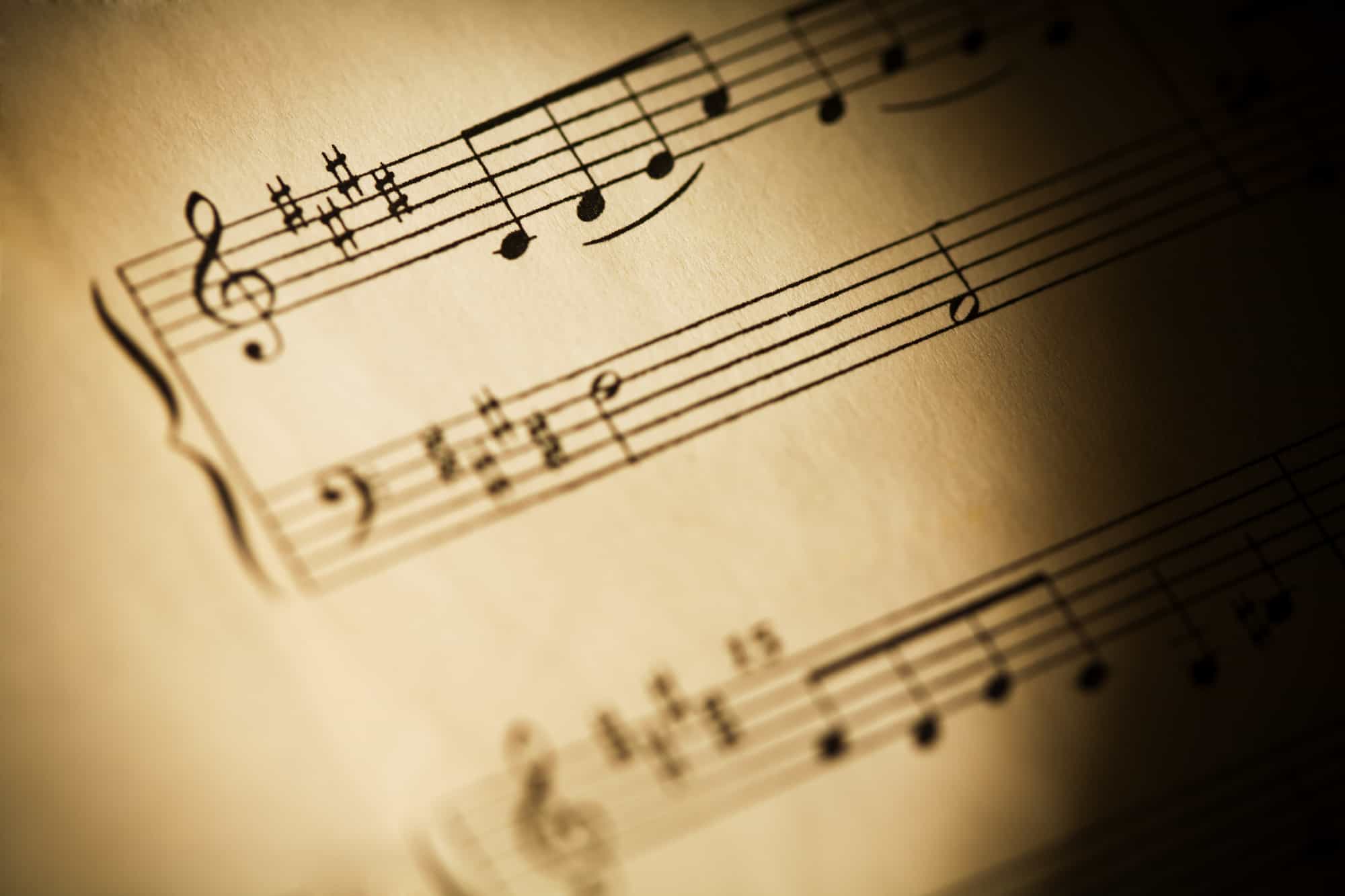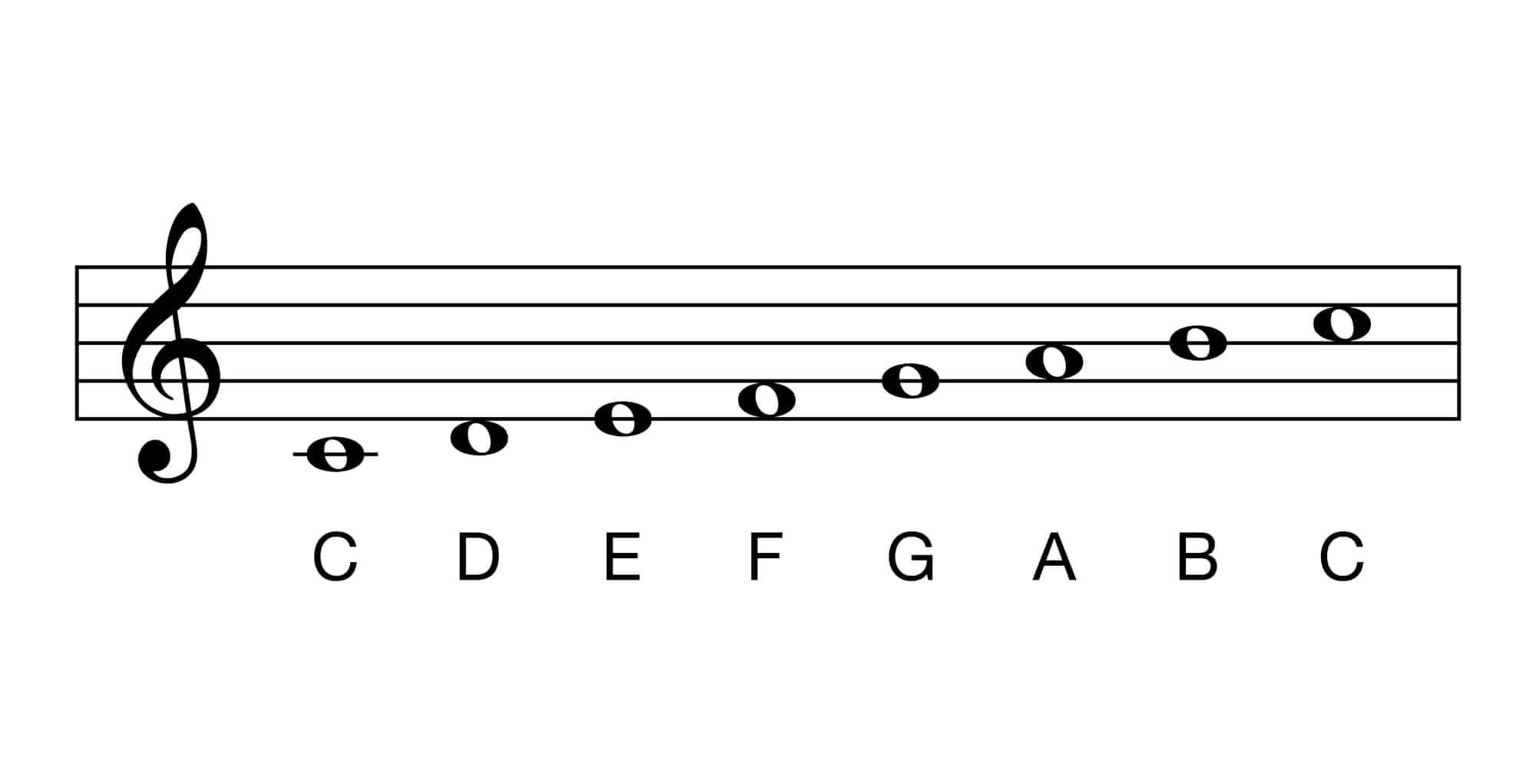Sheet music is almost a language that has been developed over thousands of years. The sheet music we know and read today has been around for over 300 years. Musical notation is represented with an array of different symbols that form the pitch, duration and timing of a piece. There are even more advanced descriptions that express the special effects and timbre of a piano piece.
In this guide we are going to introduce to the basics of reading piano sheet music and then touch on more advanced methods so you can gain more knowledge on the subject.
The Basics
Handling the Staffs
Before you start reading musical notes you will need to learn the basics that everyone who reads music must know. The horizontal lines that you will see on a musical sheet are what make up the staff. This is the most basic part of reading sheet music and all musical symbols are present on the staff. It makes up the foundation of everything that follows in this guide.
The staff is made up of five parallel lines that have spaces between them. These lines and spaces are numbered so you can refer to them as you play through the piece. You always count the lines from the lowest which is the bottom of the staff to the highest, which is the top of the staff.
Starting with the Treble Clef
One of the first things you will see when you start reading music is the clef. This is a sign that looks like a big fancy italic symbol that sits at the end of the staff. It symbolizes the range that you are going to play the instrument in. Usually, with the piano, you will be playing the treble clef staff with your right hand.
In total there are five lines in the treble clef. Starting from the bottom these represent the E G B D F notes. The four spaces in between the lines from the bottom represent the notes F A C E. This may seem tricky to remember at first, but there are handy mnemonics you can use to help you.
For the lines in the treble clef, use ‘Every Good Boy Deserves Fun‘. For the spaces, just remember that the notes spell out the word FACE.
Moving to the Bass Clef
The bass clef is traditionally played with your left hand and is where the lower notes on the piano will be. The clef still has five lines and four spaces the same as the treble clef. So the five lines starting from the bottom represent the notes G B D F A. You can remember this by saying ‘Grizzly Bears Don’t Fear Anything’. The four spaces from the bottom up represent the notes A C E G which can be remembered by saying ‘All Cows Eat Grass’.
Learning the Notes
All notes for music have the same basic elements where they are made up of the note head, the stem and then the flags.
- The note head has an oval shape and will either be open and white or closed and black. It’s the basic part that tells the pianist what note to play on the keyboard.
- The stem is a thin vertical line attached to the note head. It can either point up or down depending on the notation.
- The flag is the curved part that is attached to the end of the stem. It always sits on the right of the stem.
When you take these three elements together then you will know the time value for the given note. The placement on the staffs denote what key you will be playing in.
Understanding Meter and Time
Measure Lines
When you look at musical sheets you will notice that there are thin vertical lines that run across the staves at regular intervals. These are the measure lines or bars that separate the music out. Measure lines don’t have any bearing on how the music sounds but they do help you keep your place as you read music.
The handy thing about measure lines it that each one has the same set of beats that is set out in the tempo. So if you are playing in a 4/4 tempo, each bar will have four beats.
Meter and Timing
The meter of sheet music is the pulse that runs through the piece. Whenever you listen to a piece of music you may instinctively feel it. When you look at sheet music the beat for the piece sits next to the first clef symbol. It looks like a fraction where there is a number on the top and one on the bottom. The number that sits on the top tells you how many beats there are for each bar in the music. The bottom number shows you the value that receives one beat.
The easiest meter to understand is the 4/4 time, referred to typically as common time. In most piano music this is the meter you will come across the most. When playing in 4/4 there will be four beats and each quarter note will be equal to one beat.
Understanding Rhythm
Note Values
Each note in piano sheet music has its own value. It’s an important part of learning to read music, especially if you want to be a great pianist. The first note we are going to look at is the solid black dot that has a stem but no flag. This is what’s called a crotchet or quarter note. This has the value of one beat. If you were to double a crotchet then you get a minim or half note.
The next note you get is a whole note also referred to as a semibreve. This is worth four counts and look similar to o’s. If you were playing in 4/4 then this note would be the only note in a bar.
If you want to play music faster then you add a flag to each note. For every note flag that is present, it cuts the value of the note in half. One flag on a note means you have a quaver or quarter note. Two flags would be a semiquaver.
Ties and Dots
The dot placed after a note increases it by one half more than its original value. For example, if there was a dot after a minim it would equal a half and quarter note. Ties work in a similar way to dots. They extend the value of the note that is tied to it. Where dots have an appointed value, ties are completely based on the value of the original note. If a note is tied then it is increased in length for exactly the amount of time as the value of the second note.
Rests
Learning to read piano music isn’t just about the notes. Music also has lines and spaces in between it which are called rests. Much like notes they are specific symbols that have their own duration. A whole note rest looks like a solid rectangle that dangles from the fourth line. A half note rest is the same except it sits on top of the third line. A quarter note rest is represented by a squiggly line. All of the other rests are depicted by something that looks like a seven, with flags attached to show you the note value.
Learning to Read Music
Now that we’ve covered the basics of what all the different notes in sheet music mean, it’s time to get down to the fun stuff. If you want to learn to read sheet music you have to have mastered the above. But learning how to read notes is also an important part of the process.
The C Scale
When you first start learning to read piano music you usually be encouraged to find the middle C. The middle C major scale is the first scale any new pianists will learn. The scale of C uses the natural white notes that sit on the piano so it’s the easiest scale to pick up. First you need to know what the scale looks like so you can begin to read music. Below is an image of the C major scale.
If you look at the very first note this is the low C. You will notice that it goes below the staff lines. Whenever this happens with a note it will have a line put through it as a sort of staff line for it sit on so you know where it lies on the keyboard. The lower the note is, the more staff lines will be added.
In total, the C major scale has eight notes. They are a full octave on the piano and only include the white keys. If you are sitting at your piano, find the middle C. Now play each note following the sheet music so you know what they look like on the page. Congratulations! You’ve just read your very first piece of sheet music.
More Advanced Playing
Now that you know the very basics of how to read sheet music you have the skills to learn how to read the more advanced stuff. There’s a lot of squiggles and lines in music and once you have the basics are nailed you will want to learn the harder things.
You may have come across sharps and flats while you have been learning to read music. When you play piano you will need to recognize these as they change the tone of the note. A sharp symbol looks like a hashtag ♯while the flat symbol looks like a lowercase b ♭. Both of these can be placed to the left of a note and it indicates whether you need to play the black key above the note (sharp) or the black key below the note (flat). A minor and C major are the two notes that can’t have a sharp or flat.
If you have a piece of music that has sharps and flats in it as denoted by the key signature, there is another sign you need to learn. The last symbol is the natural symbol♮. Whenever you see this note it means that you should play the note normally on the white keys and not use the sharp or flat version of the note.
Key Signatures
So far we’ve only looked at the C major scale which contains no sharps or flats. However, a lot of sheet music for piano will be written in a certain key. Composers don’t want to muddy up their music by including a symbol every time you want to play a sharp or flat note, so instead, they use key signatures.
The key signature is placed right at the beginning of the music. You will see that any sharp or flat symbols that need to be played throughout the piece are placed here. Where they are sitting on the staffs is the note you will need to play. For example, if there was a flat symbol on the staff where E would sit as a note, that means you need to play E flat throughout the piece whenever an E note is present.
Dynamics
Music has different parts where you have to play loudly or softly. The way you can tell if you need to play softly or loudly is by looking at the dynamic markings. There are lots of these but the most common ones you will come across are m, f and p.
- p means piano which indicates you need to play it softly.
- f means forte so you need to play loudly.
- m means mezzo which is a medium volume.
- If you see mf or mp then you will need to play at a medium amount of softness or loudness.
Gradual changes in volume are referred to as crescendos and diminuendos. These are represented by arrows that are stretched out that look like < and >.
FAQs
How do you practice reading piano sheet music?
If you want to practice reading sheet music then you will want to start sight reading. This is when you sit down with a piece that you’ve never seen or played before and play it from sight for the first time. Practicing sight reading like this will help you read piano sheet music a lot faster.
How do you read a piano tab?
Piano tabs are a mixture of letters, symbols and numbers which represent where you should press on the keys. On the left side of the tab you will see numbers that represent the octave in which the notes should be played. So on a standard 88 key piano, the middle C would be the fourth note in the fourth octave. In tabs this would be written as C4. This may not be the case for all tabs so make sure you check the notes before you begin.
The symbols on the tabs are represented by dashes and vertical lines. A vertical line is used to separate bars and measures. The dashes separate notes from one another. They can also be used to indicate how long the note is.
Conclusion
We hope that our guide helped you and that you can read sheet music with ease. Happy practicing!




